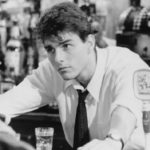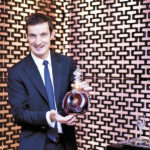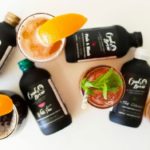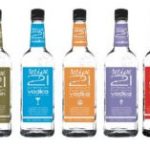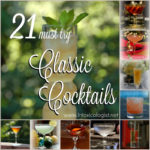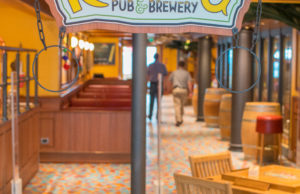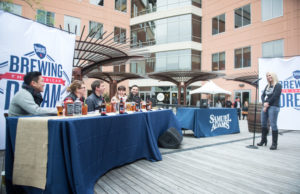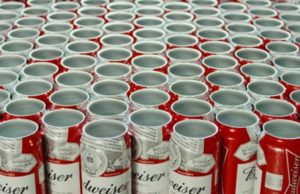As craft spirits rise, booze industry more fluid than ever
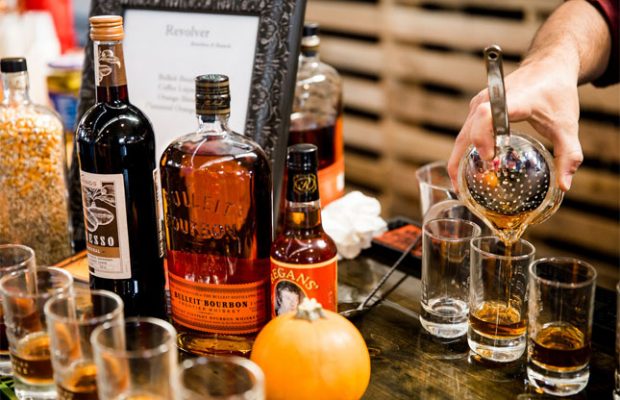
Twitter @GregTrotterTrib
The sudden rise of Angel’s Envy bourbon was a perfect storm, as co-founder Marc Bushala recalls.
The whiskey was crafted by a legendary Kentucky master distiller, the late Lincoln Henderson. The bottle, curvier and more feminine than most whiskeys, stood out on the shelf. And at around the same time of its 2010 launch, consumers started showing an increased desire to make old-school cocktails with newcomer bourbons named neither Jim nor Jack.
“It suddenly became a thing. And the timing was just serendipitous,” said Bushala, former CEO of Angel’s Envy.
By the time Bushala and his partners sold Angel’s Envy to Bacardi last year for about $150 million, it had become emblematic of new opportunity in a changing and increasingly fragmented spirits industry. The same trends that have shaken up food and beer companies are also stirring hard liquor. Consumers, particularly millennials, want more choices, more authentic stories, and they’re willing to pay more for them.
Small and independent distilleries are helping meet that demand. And increasingly, giants of the spirit industry — companies like Bacardi, Diageo Beam Suntory and Constellation Brands, — want in on the action, either through outright acquisitions, smaller strategic investments or offering new variations on familiar products. For thirsty shoppers, the result is a dizzying array of options on liquor store and supermarket shelves.
“Our dad’s generation was, I’m a Beam guy or I drink Jack, and I’m not going try that other (stuff). If you talk to a self-professed whiskey drinker today, they’ll tell you what their go-to is but they’ll probably tell you 10 other ones they’d choose from as well,” said Bushala, who’s in the process of negotiating a West Loop location for a distillery and brewery through his private equity firm, Liquid Asset Brands, which launched last year.
Last year, there were 5,805 brands of spirits selling in the U.S., up from 5,149 in 2013, an increase of 13 percent, according to Dan Wandel, principal of beverage alcohol client insights for IRI, a Chicago-based market research firm.
That increase reflects the boom of craft distillers, as well as the surge of line extensions and flavored liquors launched by large spirits companies to appeal to millennial consumers, Wandel said. But the growth of craft spirit sales is hard to capture, primarily because there’s no consistent agreed-upon definition for craft spirits, he said.
“We know there’s this big movement, but we don’t have the numbers to quantify it in our data,” Wandel said.
Looking at the growth through another measure, there were between 25 and 50 small and independent distillers in 2000, said Frank Coleman, spokesman for the Distilled Spirits Council of the United States, a trade group representing the spirits industry.
Today, there are more than 2,000 of them, said Coleman, who called the growth “stratospheric.”
In contrast to the craft beer movement, these small liquor producers are not cutting drastically into Big Liquor’s market share, at least not yet. Collectively, they represent less than 3 percent of spirits sales, Coleman said. But the little guys are stirring up excitement that helps the large companies too.
“In the past, (large spirit companies) had to spend millions of dollars to develop a new brand. Now they can just go out and buy one if they feel it’s good enough,” Coleman said.
Strategies can vary, though. Beam Suntory has doubled down on its own whiskey-rich portfolio, investing heavily in fast-growing premium brands like Knob Creek, Basil Hayden’s, Toki, Hornitos, EFFEN, Laphroaig, Bowmore and Auchentoshan, said Steve Fechheimer, senior vice president and chief strategy officer for Beam Suntory, in an email.
“These are brands that are growing rapidly with legal-purchase-age millennial consumers, especially on-premise,” Fechheimer said.
Last week, Beam Suntory unveiled its new Jim Beam Double Oak, a twice-barreled whiskey that serves as an example of how Beam is rolling out more premium iterations of its familiar brands to capture the interest of consumers.
Some companies have taken the venture capital investments a step further as a way to take a minority stake in small but promising companies. Diageo, the largest spirits producer in the world, set up an independent venture fund called Distill Ventures in 2013 that’s since invested in more than 10 companies, according to the fund’s website.
And Constellation Brands, a New York-based company with its beer business headquartered in Chicago, established its own in-house venture operation last year. So far, Constellation has taken minority stakes in two companies through the venture arm: Chicago-based Crafthouse Cocktails and Nelson’s Green Brier Distillery, which is headquartered in Tennessee.
Since Charles Joly, an acclaimed bartender who previously served up cocktails at The Aviary, launched Crafthouse in 2013 with his business partner Matt Lindner, the business has grown exponentially in Chicago and now sells in 11 states. The Crafthouse concept speaks directly to consumer trends: ready-to-pour cocktails mixed with high-quality ingredients. Beyond retail exposure throughout the Chicago area, Crafthouse also is served in mini-bottles aboard United Airlines flights.
But for Crafthouse to eventually go national in distribution, it will need a partner like Constellation, Joly said.
“We know cocktails and understand what people are looking for when it comes to entertaining and having a great option outside of quality beer and wine. Constellation has experience on a much larger stage,” Joly said.
Eventually, the venture operation also will invest in wine, beer and technology.
“What we’re seeing in craft spirits is very similar to craft beer 20 years ago,” Rice said.
Some have migrated from large spirit companies to join the upstarts. Dave Pickerell, former master distiller for Maker’s Mark bourbon, now travels the country as a consultant for small and independent distilleries. Pickerell estimates he’s helped establish more than 40 distilleries since he left Maker’s in 2008.
Pickerell still has plenty of respect for large whiskey producers, but enjoys the freedom of creativity of working with smaller distilleries.
“There’s just an unbelievable amount of innovation at the small distiller level,” Pickerell said. “You name it, they’re trying it.”
Similarly, Tom Flocco, former Beam CEO, has worked in recent years as an adviser to fledgling spirit companies, including Angel’s Envy.
Back in 2005, Flocco, then CEO of Beam, orchestrated the joint acquisition of Allied Domecq with Pernod Ricard. The deal set up Beam — which was then part of Fortune Brands — to eventually stand as an independent, public company, fortifying its portfolio with brands like Maker’s Mark bourbon, Laphroaig malt whiskey and Sauza tequila, before merging with Suntory in 2014 and becoming a private company once again.
That was all before renewed interest in bourbon, fueled by shows like “Mad Men” and “Boardwalk Empire,” coincided with the rise of small distillers, Flocco said. From 2010 to 2015, U.S. bourbon and Tennessee whiskey sales grew from $1.9 billion to almost $2.9 billion, a 52 percent increase, according to data from the Distilled Spirits Council.
“Nobody saw craft spirits coming in ’05 when we made that bet,” Flocco said.
With Angel’s Envy now in the rearview, Bushala and his partners are working on finding the next big winner. After the launch of Liquid Asset Brands last year, Bushala said more than 180 prospectuses poured in from startups seeking partners to help them grow. His River North office is filled with colorful bottles and marketing materials extolling their promise.
So far, the firm has taken a slow and measured pace for its investments. Last year, in partnership with another Chicago-based venture capital firm, Spirits Investment Partnership, Liquid Asset Brands acquired a controlling interest in Stolen Spirits, a New Zealand-based rum company, for $14 million. Bushala said he was intrigued by the rum, which is distilled in Trinidad & Tobago, and its potential as a “disruptive” product in the “sleepy” rum category. Separately, the combination brewery and distillery that Bushala has planned for the West Loop will partner with an existing Chicago brewery, Bushala said, declining to give any more details at this point.
“There’s been a proliferation of brands, but I think there’s always room for more,” Bushala said.
Click here to view original web page at www.chicagotribune.com

